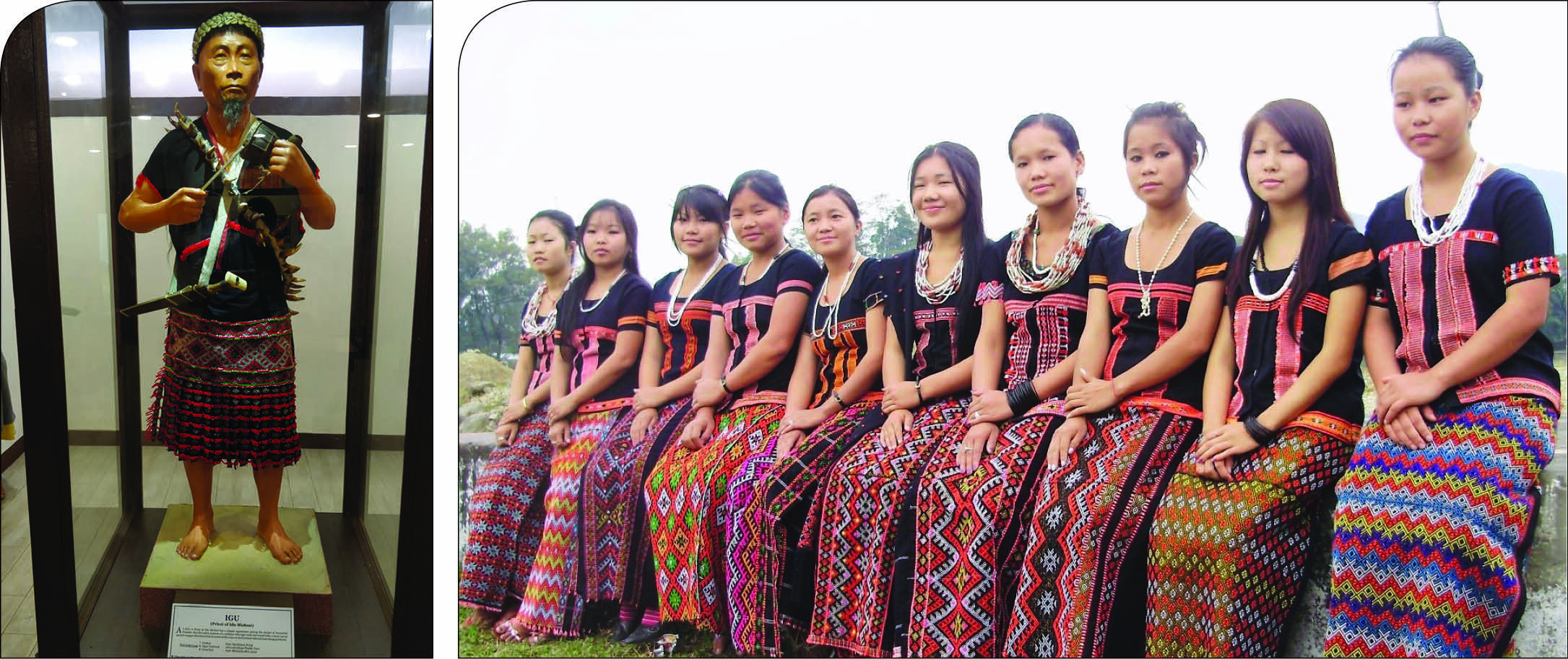Mesmerising motifs, delicate designs
The enchanting textile-making tradition of Idu Mishmi from the ‘land of dawn-lit mountains’ is the first community-funded GI-tagged entity in India

The last day of November 2019 was a red-letter day in the history of Idu Mishmi community when the Idu Mishmi Cultural and Literary Society (IMCLS) received the GI registration tag for the Idu Mishmi textiles "to authenticate the owners of the designs and the motifs of their textiles, in order to promote weaving among the young generation." Speaking on the occasion, Aba Pulu, who mentored the process, said, "this was the first GI tagging in the country which was funded by the community, without any financial support from the government."
The IMCLS president Ginko Lingki and general secretary Rao Dele were present on the occasion. Said Dele, "We should be thankful to our ancestors too for developing such intricate techniques of textile-making. It is our duty to preserve them." It was also an honour for the state of Arunachal Pradesh — the land of dawn-lit mountains. It has been called the loveliest and the loneliest frontier of India, a paradise for botanists, and the home to loveliest orchids.
In the document submitted to the GI Registry at Chennai, the IMCLS drew upon the writings of Verrier Elwin, India's famous cultural anthropologist who was appointed by Prime Minister Nehru as the Adviser for Tribal Affairs in the North-Eastern Frontier Agency from 1954 till his death, a decade later. In 1959, Elwin wrote "Idu Mishmi textiles are most elaborately designed among Arunachal tribes and have the highest number of geometrical patterns. Mishmi have a large number of words for their patterns and for all processes of weaving." He went on to describe the motifs "as inspired by nature, consisting mainly of intricate geometrical patterns like diamond, triangle, angles, and lines."
To support the community ownership of this tradition, the IMCLS further stated: Idu Mishmi Textiles are handloom goods woven by Idu Mishmi tribal women living in Dibang Valley, Lower Dibang Valley and parts of Lohit, East Siang and Upper Siang districts of Arunachal Pradesh. The knowledge of making thread and weaving artistic patterns were passed on orally from generation to generation. Continuous weaving of these patterns in the form of strips were adopted in the design of goods. The products include: women's wrap-around (Thuma), blouse or top (Etopolo), men's coat (including Atomajoh/Etokojoh, Etoma Huma, Ana Tubu / Jashitubu) and men's war-coat (Etondre). To cater to contemporary taste, and to meet the demands of Gen X, accessories like necktie, shoulder bag (Akuchi), and hand purse have also been created.
Weaving is also an intrinsic part of life, song, and collective pastime. While weaving these intricate patterns, the Mishmi women would often burst into a folk song, like the one given below:
"Let the news of my skilful work in weaving spread far and wide/
Let the news of skilful and fast work of embedding design spread far to the deserving young and rich men/
So that someone will take me to his home with love and honour/
Otherwise, I will remain unmarried throughout my life like a "Nawrunto tree'' or "Sojambo plant."
In 1983, Tarun Bhattacharjee recorded the weaving techniques of Idu Mishmi: "The yarn is extracted from the nettle plant (malu), grown in the wild. The dried plants are made into balls and put in hot water. Ash is added and stirred. Then it is taken out, washed, dried, and used in looms. Distinct coloured yarns like red, green, and black are also made by adding different plant materials while boiling. Akona (wild variety of Banana leaf) and Eron (solid wax) were used to soften the yarn."
Who are Idu Mishmi?
The 26 clans of Idu Mishmi, many of whom can trace their lineage to 28 generations, are from the Tibeto-Burman stock. They migrated over ten centuries ago from Tibet to their present habitat through Dibang and Lohit Valleys. Some of the prominent migration points from Tibet indicated by the ancestors include Andiku (the direction towards North-Pole Star), Ase Ale (the course of Lohit River) and Inni Lon Pon (the region where the first rays of the sun falls).
The Idu Mishmi can be distinctively identified from other tribal groups of Arunachal Pradesh by their typical hairstyle, distinctive costumes and artistic patterns embedded on their clothes. They worship several benevolent and malevolent spirits — the most prominent being Nani-Intaya (or the creator of mankind, the universe as well as the Idus). Archaeological finds of the 10th Century CE at Bhismaknagar, Chidu & Chimri villages in the lower belt of the district suggest that the Idu Mishmi had trade and exchange relations with people of plains and adjoining states. Of course, as the East India company moved into Assam to establish tea gardens, they encountered the Idu Mishmi of the frontier hills. However, as Lt Burton recorded in 1825, "the area was far too remote, and the population far too sparse", it escaped the dragnet of the missionary activity, and they still pray to Nani-Intaya. The priests have a special wardrobe, exclusively designed for the special rites and prayers.
The special wardrobe and the weaving traditions associated with it were celebrated earlier this year (March 3, 2022) when the Arunachal Postal Division released a special postal cover on the Geographical Indication Tag for Idu Mishmi Textiles at Itanagar. The occasion was marked by the presence of legislator Mutchu Mithi and the Commissioner of Planning for Arunachal, Prashant Lokhande. Expressing his gratitude to India Post, Mithi stated that the rich identity of the Idu Mishmi weaving tradition represented on the postal cover will give a pan India exposure to this unique offering from the loveliest frontier!
Views expressed are personal



